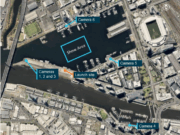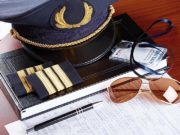A drone struck a nine-passenger Beech King Air 100 operated by charter carrier Skyjet as it descended to land at Jean Lesage International Airport in Quebec City in what Canadian Transport Minister Marc Garneau says was the first event of its kind in Canada.
The King Air sustained minor damage from the strike on Oct. 12, and no one was injured, Transport Canada (TC) said in a statement issued Sunday. The crew landed the airplane safely shortly after the strike. The King Air had been carrying eight passengers to Quebec City from Rouyn-Norada, Quebec.
Garneau told the Canadian Broadcasting Corp. that the collision “should not have happened. That drone should not have been there.”
He estimated that the drone was operating at about 450 m (1,476 ft) and about 3 nm (4.8 km) from the airport. Canadian regulations prohibit the operation of recreational drones — known by a variety of other terms, including unmanned aircraft systems and remotely piloted aircraft systems — above 90 m (295 ft) and within 5.5 km (3.4 nm) of an airport.
“Although the vast majority of drone operators fly responsibly, it was our concern for incidents like this that prompted me to take action and issue interim safety measures restricting where recreational drones could be flown,” Garneau said in a statement released by his office. “I would like to remind drone operators that endangering the safety of an aircraft is extremely dangerous and a serious offence.”
Violations of the regulations are punishable by fines of up to $25,000 or a prison term, or both.
“This applies to drones of any size, used for any purpose,” Garneau said. “All airports, helipads and seaplane bases are ‘no drone zones’ if you do not have permission from Transport Canada.”
Data show that 1,596 drone events have been reported to TC so far in 2017; of this number, 131 events are considered to have been “of aviation safety concern,” TC said.
Garneau said TC is monitoring the situation, and that his office will cooperate if the Transportation Safety Board of Canada investigates. His office also is in contact with law enforcement authorities, he said.


